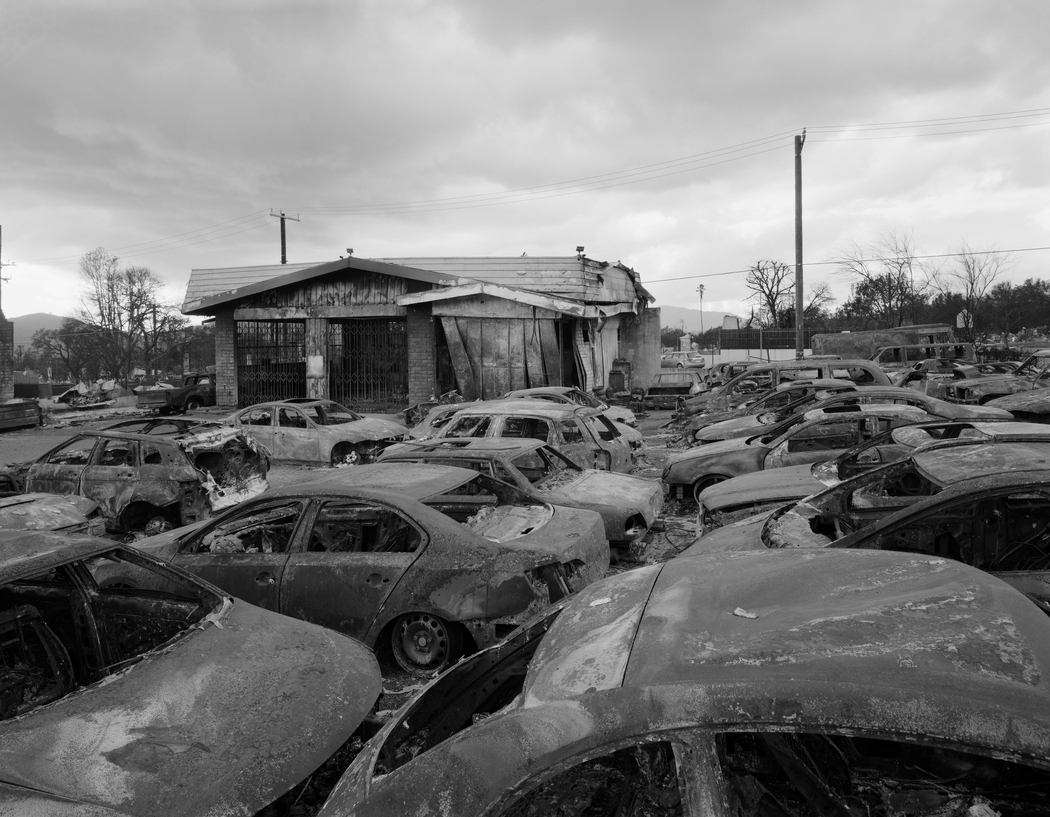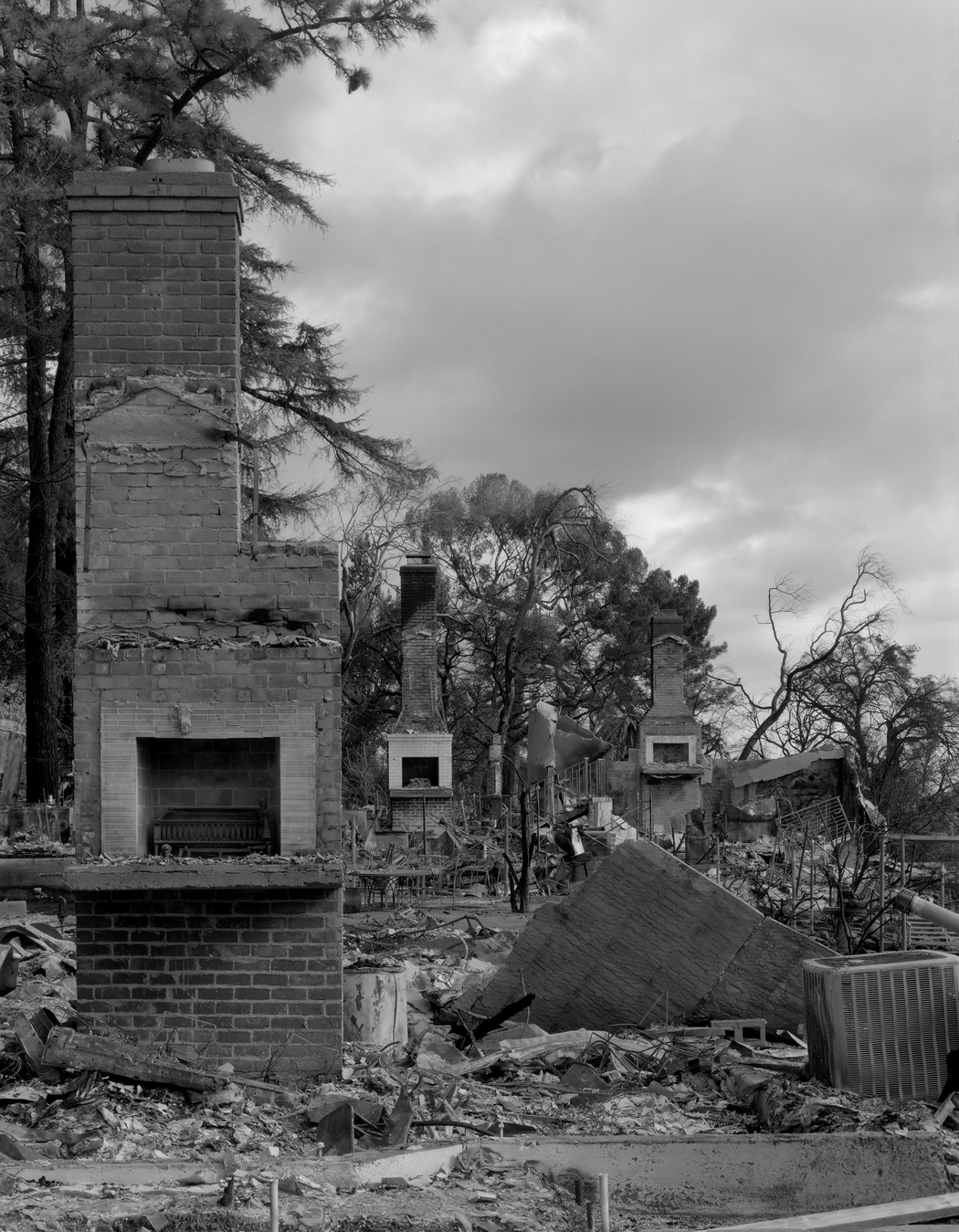Tianrun Shi
Tianrun Shi: Witnessing Absence, Photographing Resilience
By Anna Gvozdeva
In his poignant photographic series Ash Still Falls, photographer Tianrun Shi turns his lens toward the haunting aftermath of the 2025 Los Angeles wildfires. Through the quiet endurance of chimneys and fireplaces—structures once built to tame fire, now standing as its final survivors—Shi presents an introspective narrative on memory, vulnerability, and the paradox of resilience.
Rather than focusing on the chaos or human drama often associated with natural disasters, Shi’s approach is meditative. He documents the silence left behind: skeletal remnants of homes, landscapes veiled in ash, and the eerie stillness that follows catastrophe. “The absence itself became the story,” Shi reflects. “I wasn’t interested in photographing people directly, because their absence spoke volumes.”
The fireplaces—stoic, timeworn, exposed—became symbols at the center of the project. To Shi, they hold emotional weight: “They once represented safety, routine, and warmth. Now they stand alone, stripped of walls, of life, but still upright. They’re the bones of memory.” These remnants, once intimate hearths, now serve as architectural elegies—monuments to lives disrupted, yet not entirely erased.
Shi chose to shoot the entire series using a 4×5 large-format film camera, a technical and deliberate decision that shaped both the tone and the pace of the work. “The process slows you down. Each image requires patience and intention. It’s almost like standing before a grave—you have to look carefully and quietly,” he explains. The clarity and detail afforded by the large format helped capture every crack in the brick, every ash-covered surface, allowing these fragile structures to speak with quiet dignity.
 Tianrun Shi | Ash Still Falls
Tianrun Shi | Ash Still Falls
While his compositions are stark, they never feel empty. In fact, it is through absence that Shi creates a powerful presence. “I think of absence as the emotional architecture of the work,” he says. “By not showing people, I hoped to amplify their presence in the viewer’s mind—inviting them to imagine the stories, the lives once lived in those spaces.”
Drawing inspiration from photographers like Hiroshi Sugimoto and Stephen Shore, Shi embraces stillness as a form of empathy. His images, often in soft monochrome tones, are quiet but not passive. They resist spectacle. Instead, they ask the viewer to pause, to reflect, to see what remains.
One of the most striking elements of Ash Still Falls is its exploration of fire’s duality—as both a destructive and constructive force. “Fire gave us warmth and civilization, but it also takes everything away when it escapes our control,” Shi says. The irony of chimneys—structures built to contain fire—being the last to remain after a wildfire, is not lost on him. “They represent our oldest attempts to make fire safe. Now, they stand surrounded by destruction. That contradiction became the soul of the project.”
The physical process of capturing these images came with its own challenges. Photographing post-fire landscapes meant navigating unstable terrain, inhaling smoke, and balancing a large-format camera on uncertain ground. Yet Shi approached each scene with restraint, mindfulness, and respect. “These weren’t just ruins,” he emphasizes. “They were private losses, homes once full of life.”
Ultimately, Ash Still Falls is not merely a documentation of destruction—it is a meditation on survival, memory, and the emotional residue of what we call home. It invites the viewer to consider resilience not as loud defiance, but as quiet presence. “Sometimes, what remains is the most powerful testimony,” Shi says. “Not everything needs to shout to be heard.”
 Tianrun Shi | Ash Still Falls
Tianrun Shi | Ash Still Falls

Leave a Reply